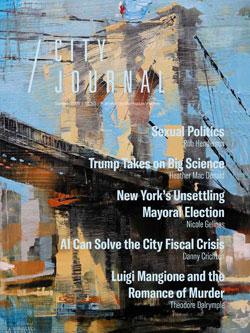Report on Judicial Power and its Implications for Sustainable Governance
Executive Summary
An analysis of the relationship between the executive and judicial branches of government reveals significant challenges to institutional stability and the rule of law. The increasing frequency of judicial injunctions, particularly those with nationwide scope, against executive policies poses a direct threat to the principles outlined in Sustainable Development Goal 16 (Peace, Justice and Strong Institutions). This trend can disrupt the development of effective, accountable, and transparent institutions, thereby impeding the implementation of policies crucial for achieving the broader 2030 Agenda for Sustainable Development. A stable and predictable governance framework, where all branches respect their constitutional roles, is a prerequisite for progress across all SDGs, from environmental protection (SDG 13) to economic growth (SDG 8) and reduced inequalities (SDG 10).
The Role of Judicial Injunctions in National Governance
A Statistical Overview of Institutional Friction
The issuance of nationwide injunctions against administration policies has seen a dramatic increase, indicating a rise in friction between the judicial and executive branches. This trend undermines policy coherence for sustainable development, a key target of SDG 17.
- 1963-2001: 31 nationwide injunctions were issued against various administrations.
- George W. Bush Administration: A total of six policies were blocked by injunctions.
- Obama Administration: The number rose to 12 injunctions.
- Trump Administration (First Term): A significant increase to 64 injunctions was recorded.
- Biden Administration (through 2023): A return to 14 injunctions was observed.
Implications for SDG 16: Peace, Justice and Strong Institutions
This pattern of judicial intervention directly impacts the targets of SDG 16. The use of nationwide injunctions by single lower courts to halt national policies challenges the goal of building effective, accountable, and inclusive institutions at all levels (Target 16.6). When one court can override executive action for an entire nation, it disrupts the responsive, inclusive, and representative decision-making processes (Target 16.7) essential for good governance. This practice creates legal uncertainty and can paralyze the government’s ability to implement programs designed to advance sustainable development goals.
Constitutional Frameworks and the Pursuit of Sustainable Development
Separation of Powers as a Foundation for Good Governance
The principle of separated powers is a cornerstone of a constitutional system designed to ensure stability and accountability, aligning with the aims of SDG 16. Mutual respect between the executive and judicial branches is essential. Courts must operate within their jurisdiction, which is the source of their authority to resolve cases and interpret law. When courts issue orders, such as nationwide injunctions, that apply to individuals not party to a case, they risk crossing the line from judicial interpretation to executive administration. This overreach can weaken the institutional framework necessary to address complex challenges like climate change (SDG 13) and social inequality (SDG 10).
Historical precedents, such as President Lincoln’s response to the Dred Scott decision, illustrate the distinction between respecting a court’s judgment in a specific case and treating its reasoning as an absolute political rule. Lincoln’s administration continued to issue passports to free African Americans, upholding a different interpretation of citizenship and advancing the cause of equality. This demonstrates a commitment to the rule of law while exercising independent executive judgment, a balance crucial for resilient and just institutions (SDG 16).
Analysis of Modern Injunctive Practices and their Effect on SDG Attainment
Key Issues with Current Injunctive Relief
The modern application of injunctions presents several challenges to the principles of good governance and the rule of law central to SDG 16. These problematic features, especially when combined, risk creating institutional crises that hinder sustainable development.
- Improper Grounds for Relief: Many injunctions are issued without satisfying the traditional legal requirement that monetary damages or other legal remedies are inadequate. For instance, ordering the reinstatement of removed officials, when back pay is the established legal remedy, disregards legal tradition and impacts the effective functioning of public institutions (SDG 16, SDG 8).
- Extra-Jurisdictional Scope: The application of injunctions to nonparties on a universal or nationwide basis exceeds the traditional judicial power to resolve disputes between the parties before the court. This practice encourages “forum-shopping” and allows a single court to set national policy, undermining the democratic and deliberative processes required for sustainable policymaking.
- Pre-Enforcement Application: Issuing injunctions before a policy is enforced can halt government action preemptively. While sometimes necessary, when combined with a universal scope, it allows courts to act as a “council of revision,” a role the Framers of the U.S. Constitution rejected, thereby weakening the executive’s ability to respond to pressing national needs related to various SDGs.
The Challenge of Universal Injunctions and Class Actions
The use of universal injunctions and expansive class actions to block administration policies represents a significant threat to policy coherence for sustainable development (SDG 17.14). Instead of allowing legal issues to percolate through different courts, a single ruling can bring national initiatives to a halt. This circumvents the development of a robust legal consensus and transforms the judiciary into a primary political obstacle rather than an impartial arbiter. Such a dynamic is inconsistent with the goal of promoting the rule of law at the national level and ensuring equal access to justice for all (SDG 16.3).
Recommendations for Strengthening Institutional Coherence for Sustainable Development
Proposed Institutional Reforms
To mitigate the constitutional tensions and promote a more stable governance environment conducive to achieving the SDGs, legislative reforms could be considered. One proposal involves reinstating three-judge district court panels for cases seeking to enjoin federal laws or executive orders. This would ensure a broader judicial consensus is required for such a significant action, reducing the impact of forum-shopping and strengthening the legitimacy of judicial oversight.
A Call for Judicial Restraint to Uphold the Rule of Law
Ultimately, progress toward the 2030 Agenda depends on strong, reliable, and accountable institutions. The judiciary plays a vital role in upholding the rule of law, but it must exercise its power with restraint and respect for the roles of the co-equal branches of government. By adhering to established jurisdictional and remedial principles, courts can avoid precipitating institutional crises. A balanced and predictable legal framework is essential for fostering the public trust and policy stability needed to address the world’s most pressing sustainable development challenges. The effective functioning of government, as envisioned by SDG 16, requires that all institutions, including the courts, remain within their appropriate lanes.
Relevant Sustainable Development Goals (SDGs)
SDG 16: Peace, Justice and Strong Institutions
- The article’s central theme is the functioning of the judiciary, the separation of powers between the executive and judicial branches, and the application of the rule of law in the United States. It directly addresses the need for effective, accountable, and transparent institutions. The text scrutinizes the actions of lower courts, particularly their use of nationwide injunctions, questioning whether these actions respect the constitutional limits of judicial power. This aligns with the core principles of SDG 16, which aims to “Promote peaceful and inclusive societies for sustainable development, provide access to justice for all and build effective, accountable and inclusive institutions at all levels.” The discussion of historical cases like Dred Scott v. Sandford and Ex parte Merryman further highlights the long-standing debate over judicial authority and the rule of law.
Specific SDG Targets
Target 16.3: Promote the rule of law at the national and international levels and ensure equal access to justice for all.
- The article is fundamentally a discussion about promoting and respecting the rule of law. It examines whether courts are correctly applying legal principles regarding jurisdiction, remedies (injunctions vs. monetary damages), and causes of action. The author argues that when a court “enjoins a policy nationwide…it crosses the line between judicial and executive power,” suggesting a breakdown in the established rule of law. The historical example of Abraham Lincoln abiding by the judgment in Dred Scott but not its interpretation as a “political rule” is a direct exploration of how the rule of law functions in the face of judicial decisions perceived as unjust or erroneous.
Target 16.6: Develop effective, accountable and transparent institutions at all levels.
- The article questions the effectiveness and accountability of the judicial system, specifically lower federal courts. The author argues that the “widespread use and abuse of injunctions” has turned courts into a “standing council of revision over the general administration of government,” which undermines their intended role. The critique of forum-shopping, where litigants seek out a single favorable judge to block a policy nationwide, points to a lack of accountability and systemic effectiveness. The entire piece is a call for judicial restraint and for courts to function as the accountable institutions they were designed to be.
Implied Indicators for Measuring Progress
Indicator for Targets 16.3 and 16.6: Frequency of nationwide injunctions against the executive branch.
- The article provides specific quantitative data that can be used as an indicator to measure the functioning and behavior of judicial institutions. The author uses the number of injunctions issued against various presidential administrations to argue that a significant shift has occurred, implying a change in judicial accountability and adherence to the rule of law. The specific data points mentioned are:
- 1963-2001: 31 nationwide injunctions issued.
- George W. Bush Administration: 6 injunctions.
- Obama Administration: 12 injunctions.
- Trump Administration (First Term): 64 injunctions.
- Biden Administration (through 2023): 14 injunctions.
- This data serves as a direct, measurable indicator of the phenomenon being discussed—the increasing use of a judicial tool that the author claims challenges the effectiveness and accountability of the judiciary and the broader rule of law.
Table of Findings
| SDGs | Targets | Indicators |
|---|---|---|
| SDG 16: Peace, Justice and Strong Institutions |
16.3: Promote the rule of law at the national and international levels and ensure equal access to justice for all.
16.6: Develop effective, accountable and transparent institutions at all levels. |
Quantitative Indicator: The number and frequency of nationwide injunctions issued by courts against executive branch policies. The article provides specific figures:
This data is used to measure the perceived accountability and proper functioning of the judiciary. |
Source: city-journal.org






